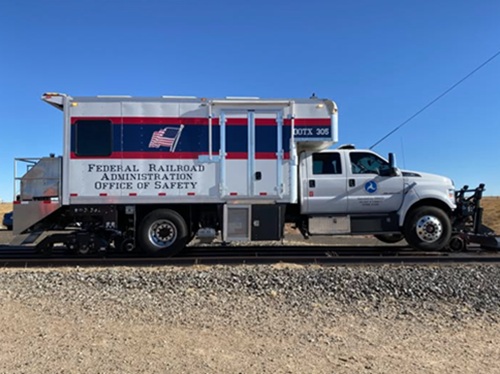In a comment letter filed on August 16, the American Association of State Highway and Transportation Officials provided the U.S. Department of Transportation with advice regarding short- and long-term efforts to help establish the Advanced Air Mobility or AAM sector.
[Above photo by Ohio DOT]
“AASHTO and state departments of transportation strongly support the development of a national strategy for AAM,” the group said in its letter. “It is important to realize the potential benefits of this new technology, including expanding aviation services, enhancing connectivity and mobility, reducing carbon emissions, and saving lives through rapid medical and emergency transportation services.”
The organization noted that state DOTs have played a “vital role” in the development and deployment of new aviation technologies related to AAM – particularly where drones, also known as uncrewed aerial systems or UAS, are concerned.
“Many state DOTs use UAS to fulfill crucial agency functions, such as bridge inspections and traffic incident response,” AASHTO said. “In addition, many state DOTs have engaged with public and private sector partners to establish UAS pilot [projects] for delivering packages and medical supplies [and are] incorporating AAM into [their] long-range transportation planning efforts.”
To support the successful implementation of AAM nationwide, AASHTO and its state DOT members offered a series of steps USDOT can take:
- For the short-term, the next two to three years: Evaluate existing regulations and develop new ones that accommodate the “unique aspects” of AAM operations, prioritizing safety and efficient integration; support pilot training UAS demonstration programs to validate technologies, assess operational procedures, and gather real-world data to inform future decision-making; and begin infrastructure planning, including working with local authorities to identify key locations for “vertiports,” assessing electrical power grid capacity to re-powering drones, and investing in key UAS communication systems.
- For the medium-term, the next four to eight years: Work with industry stakeholders to establish common standards for AAM operations, safety, and infrastructure requirements to ensure interoperability and compatibility; engage communities and conduct public awareness campaigns to address UAS concerns and ensure transparency in the decision-making process.
- For the long-term, the next eight-plus years: Develop a roadmap for the widespread deployment of AAM services, considering factors such as demand, infrastructure readiness, and integration with other transportation modes; foster ongoing research and development efforts to improve AAM technologies, increase efficiency, and reduce costs, while enhancing UAS safety and sector sustainability.
 Top Stories
Top Stories
State DOTs Making Preparations for Wintertime Operations
December 12, 2025 Top Stories
Top Stories

